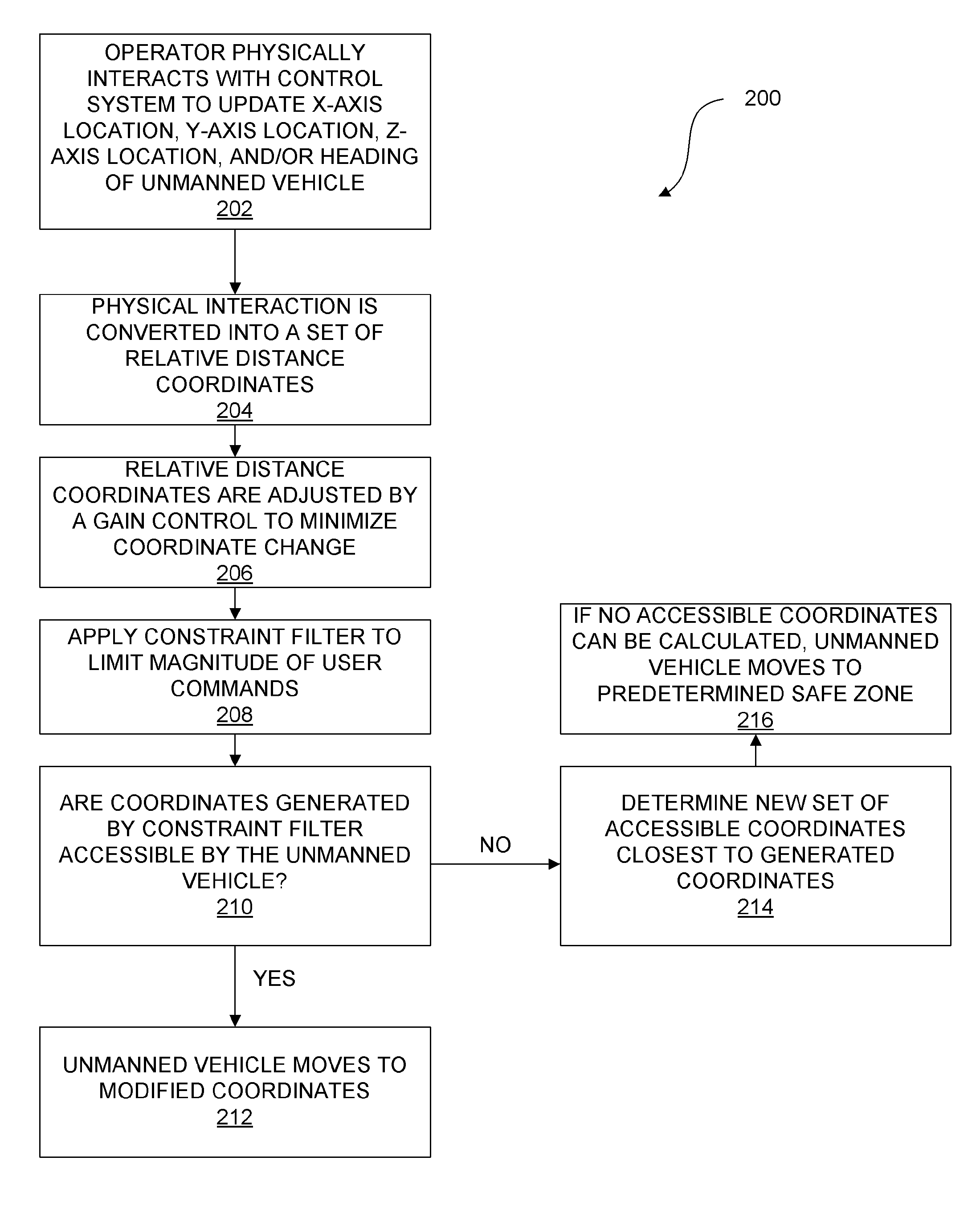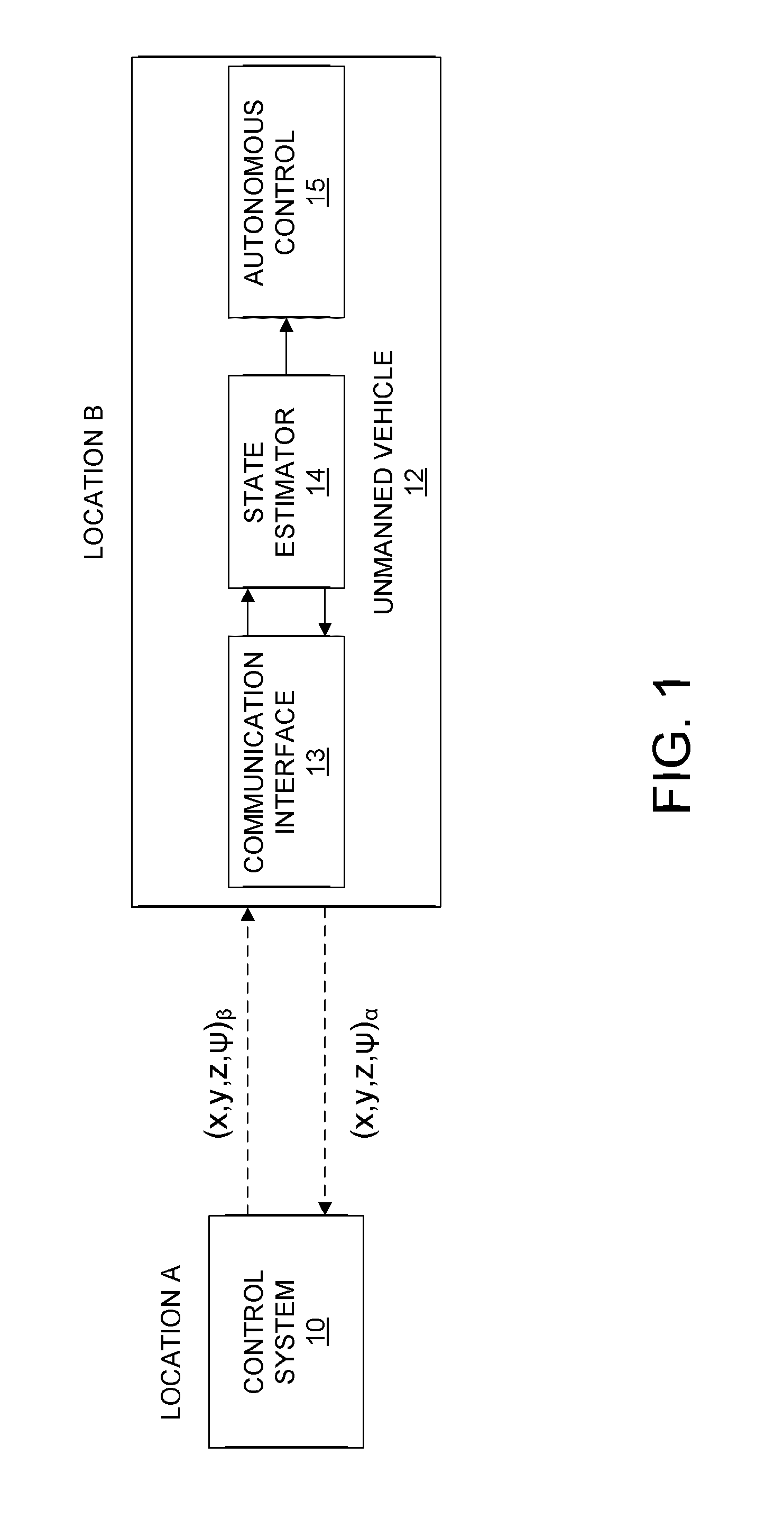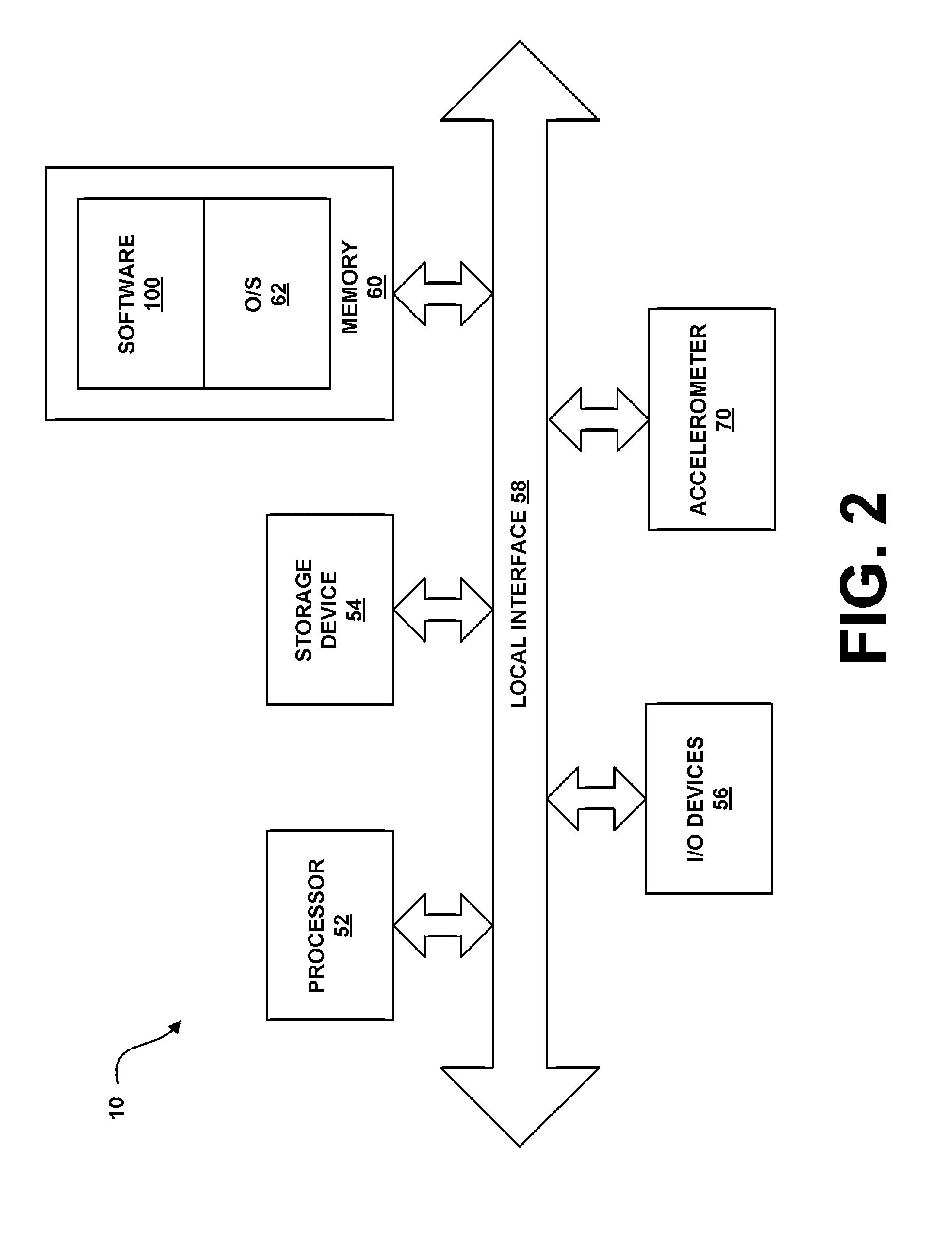System and Method for Providing Perceived First-Order Control of an Unmanned Vehicle
a technology of perception and control, applied in the field of unmanned vehicle control, can solve the problems of difficult environments, little advance knowledge or information about their surroundings, and often outdated maps,
- Summary
- Abstract
- Description
- Claims
- Application Information
AI Technical Summary
Benefits of technology
Problems solved by technology
Method used
Image
Examples
Embodiment Construction
[0026]The present system and method may use multimodal interaction, which uses two or more distinct mediums of interactions to enhance the usability of an interface. Alternatively, a single mode of interaction may be used to interact with the interface. Specifically, the present system and method provides for fine-tune control of unmanned vehicles through use of an interface that provides supervisory control. A perceived first order control is provided by the present system and method, which provides a stable and safe 0th order system control, while allowing operators to perceive 1st order control so as to achieve effective control of an unmanned vehicle with minimal training. An example of such an unmanned vehicle may be, but is not limited to, a Micro Aerial Vehicle (MAV), which is a class of Unmanned Aerial Vehicle (UAV). It should be noted that, although portions of the following description are provided with reference to control of an Unmanned Aerial Vehicle (UAV), the present ...
PUM
 Login to View More
Login to View More Abstract
Description
Claims
Application Information
 Login to View More
Login to View More - R&D
- Intellectual Property
- Life Sciences
- Materials
- Tech Scout
- Unparalleled Data Quality
- Higher Quality Content
- 60% Fewer Hallucinations
Browse by: Latest US Patents, China's latest patents, Technical Efficacy Thesaurus, Application Domain, Technology Topic, Popular Technical Reports.
© 2025 PatSnap. All rights reserved.Legal|Privacy policy|Modern Slavery Act Transparency Statement|Sitemap|About US| Contact US: help@patsnap.com



